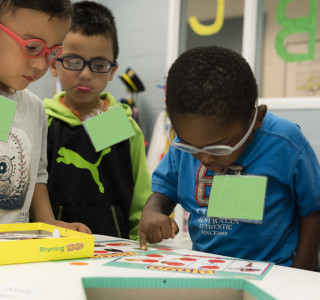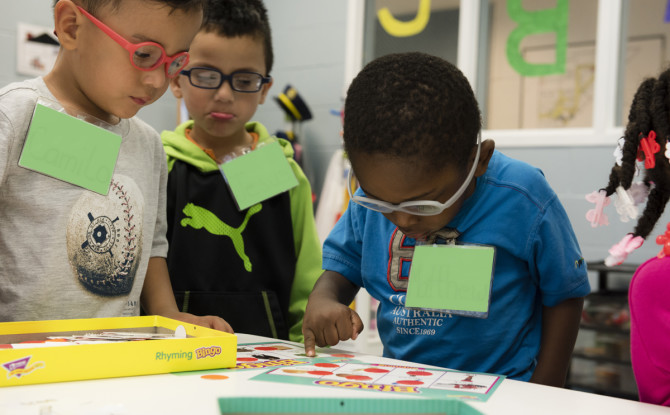
Where do children who are blind or visually impaired go to school?
September 1, 2016
“So do you go to a special school”? I remember being asked this question all of the time as a child. Although special schools for the blind do exist, many children who are blind or visually impaired in the United States now attend public schools alongside their sighted peers. Still, there are children that might benefit best from attending specialized schools for part or all of their education. This column is not meant to persuade readers on which school setting is better. It is only meant to give information on the various types of education options available to blind and visually impaired children in the United States.
Regular Public School
The Individuals with Disabilities Education Act (IDEA) of 1975 guarantees an education in “the least restrictive environment.” This means that children with disabilities are entitled to a free education in the public school system, just like their non-disabled peers. IDEA was reauthorized and revised in 2004. A child who is blind or visually impaired can go to a local public school, and he or she should be provided with the necessary tools and support system to learn and participate in the classroom. These tools and support are primarily provided in three ways.
1. Classroom for Students with Visual Impairments
Some districts provide a special classroom staffed by a teacher of the visually impaired, and students may be in this classroom for part or all of the day. They will often be here to learn things such as independent travel, Braille and assistive technology. In some cases, they might also be in this classroom to learn academic subjects. However, the majority of students with visual impairments will attend the regular classroom for these classes. Not all districts provide this classroom, so in many cases children will have to be bused to schools outside their neighborhood.
2. Resource Room
If a student is primarily in regular (or mainstream) classes, he or she will most likely go to a resource room for part of the day. Students might come to this room to learn how to use assistive technology, or to complete assignments with specialized tools or materials. Resource rooms serve students with various types of disabilities, and are found in many districts.
3. Regular Classroom
Many students with visual impairments attend their local school districts with their sighted peers. They receive specialized instruction from an itinerant teacher of the visually impaired, who works one-on-one with each student. These teachers travel to different schools, and work with students, either in the regular education classroom, or in a separate room. They may teach students things like Braille, assistive technology and other techniques for completing school assignments. The time spent with each student varies depending on the child’s individual needs.
Specialized or Residential Schools for the Blind
Most states have specialized schools for children who are blind or visually impaired. While the majority of blind and visually impaired children attended these schools in the past, nowadays they primarily serve students with additional disabilities. Schools for the blind are often residential and serve students from throughout the state where they are located. They provide many specialized services, such as Braille and assistive technology lessons, instruction in orientation and mobility and occupational and physical therapy. Some students in these schools might even attend the local public school to participate in mainstream classes.
The Chicago Lighthouse offers many education services for children with visual impairments, from a blended preschool, to a specialized therapeutic center for children with additional disabilities. We also distribute assistive technology, textbooks and other classroom materials to students throughout Illinois from our Illinois Instructional Materials Center, and our scholarships help college students reach their goals of a higher education.
Deciding where a child who is blind or visually impaired goes to school depends on many factors. There are pros and cons with all types of settings, and it is up to the child’s parents and teachers to determine the best placement. Parents should do as much research as possible about their home district and specialized schools in order to decide what is best for their child. No matter the decision, the overall objective should be for a student to receive the education and services that will best meet his or her needs. We wish all students the best of luck and success during this new school year!
 Sandy Murillo works at The Chicago Lighthouse, an organization serving the blind and visually impaired. She is the author of Sandy’s View, a bi-weekly Lighthouse blog about blindness and low vision. The blog covers topics of interest to those living with blindness and vision impairments. Being a blind journalist and blogger herself, Sandy shares her unique perspective about ways to live and cope with vision loss.
Sandy Murillo works at The Chicago Lighthouse, an organization serving the blind and visually impaired. She is the author of Sandy’s View, a bi-weekly Lighthouse blog about blindness and low vision. The blog covers topics of interest to those living with blindness and vision impairments. Being a blind journalist and blogger herself, Sandy shares her unique perspective about ways to live and cope with vision loss.






